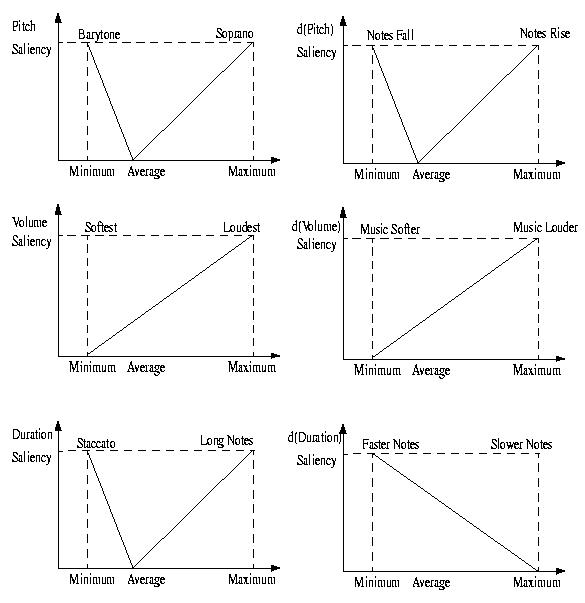
Saliency is a value between 0 and 1 that indicates how important a vector or a field inside a vector is. The most important ones have a value, the least important, a saliency of 0.
The saliency value for a vector is computed as the average of individual saliencies calculated for each of the components.
Individual saliencies for each value are computed relative to the window of attention. The highest value in the window will generally have a saliency value of 1, as well as the lowest one. An average value will have a saliency value of 0.
The highest volume in the current window yields a saliency of 1. The lowest has a saliency of 0.The longest duration and the shortest one have saliencies of 1 (either long = salient or staccato = salient), and the average duration will have a saliency of 0.
Similarly for pitch - highest and lowest notes have saliency of 1, and average pitch has saliency of 0.
Derivatives follow the saliency rules as the components they come from.
We have thus constructed many saliency maps. One can pay attention to notes salient in volume, or in pitch, or in duration, or in their derivatives. The pattern matcher also computes a periodicity saliency map, which gives a value of 1 to notes expected to be salient, and a 0 to the non-salient ones. Together with the pre-saliency values, this final addition constitutes the saliency part of the code.
On to Pattern Matching...